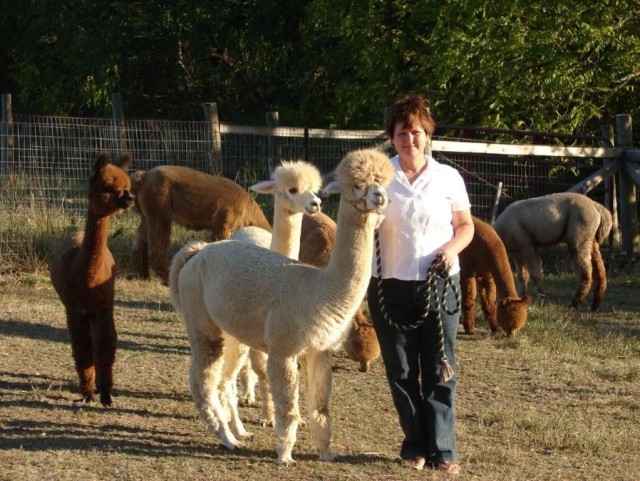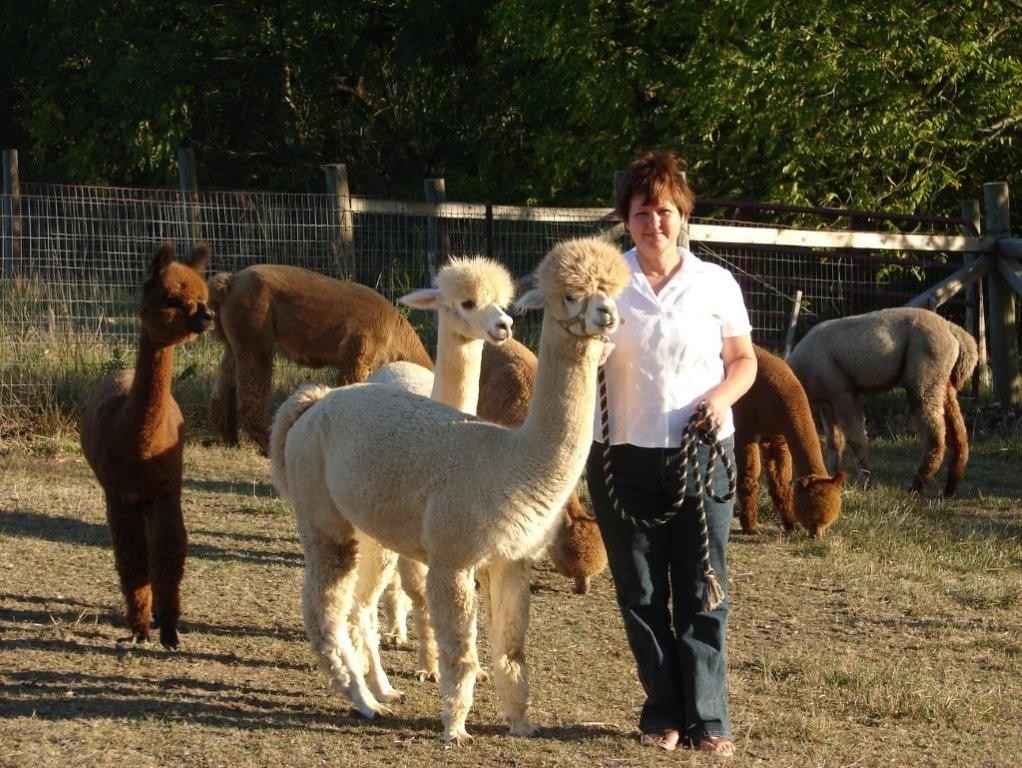Bohemian Rhapsody, Ben, Faith and Sunday may be songs found on a golden oldies compact disc, but they can also be found roaming on Denise Price\'s farm in Virginia's Shenandoah Valley.
Bohemian Rhapsody and the others are alpacas. Price is the strategy alignment and performance management chief with the Army Contracting Command at Fort Belvoir, Va.
An alpaca is a domesticated species of South American camelid (in the camel family) and looks like a small llama. They are bred specifically for their cashmere-like like fleece. Once shorn, the fiber is used to knit items, much like wool, such as clothing, blankets, etc.
Raised in the shadows of Philadelphia, Pa., Price's childhood was far removed from that of those in rural areas. Her days were spent jumping rope and playing hop-scotch on asphalt, not milking cows or tending to other animals on a farm.
"John (Price's husband) and I were brainstorming different farm ideas but we never seriously thought about livestock because we did not have a lot of exposure to farm life," said Price, whose first exposure to farm life led to her current passion. "While living in Ohio a few years ago, we had several acres of property and visited an open house at a local farm. We learned a lot about alpacas during that visit."
That visit led to other visits to other farms and research, lots and lots of research.
After learning that alpacas were relatively easy to care for, relatively small in size and only have teeth on the bottom of their jaws, the Prices determined the animals were harmless enough to raise.
"I liked them because they are intelligent, gentle. They are absolutely beautiful and are fun to own and interact with," Price said.
Price's herd of alpacas began with one female alpaca named Bunny. Today, the Price's have 28 alpacas in an assortment of colors.
"We have a rainbow of alpaca colors," Price said. "Not sure if we have the full spectrum of options but they are different shades of black, grey, brown, and white." An alpacas fleece is 10 times warmer than wool for an equivalent weight of fiber she said. And because the fleece is so fine, it can be worn against the skin like cashmere.
It's those shades, its silky natural fiber, sheen and texture that make the alpaca's tresses a wanted commodity.
"For us, sheering the alpacas is a big event," Price said, who hires a professional sheering team to trim the fleece. "We invite family and friends to come out and help out where they can. Family and friends help out with moving animals into and out of the barn, picking of the fleece, moving bags of fleece, and taking pictures. Last May we had a pig roast for our sheering team."
Once gathered, the fleece is sold to a farming cooperative that converts it to clothing and other merchandise. She estimates gathering at least six cubic feet of packed alpaca fleece from her herd. While Price can see the fleece leave her fields, the same can't be said for the animals.
"I'm a reluctant business owner. I love the animals and can't imagine selling any of them. But I do understand that will come a day when our herd gets larger that some will need to be sold," she said.
That day may be coming soon as the alpaca's are breeding at a steady pace.
"The crias (baby alpacas) are adorable and need some special handling because you need to weigh them a couple times a day for the first week, you can also pick them up without risk of injury and it is such a great surprise to see the results of the breeding," Price said. "You don't know what color, which sex or the quality of their fleece until they arrive."
"Alpaca farming has become a great way to bring people together," Price said. "I look forward to many years as alpaca farmers, sharing our herd and our enthusiasm every chance I get."


Social Sharing